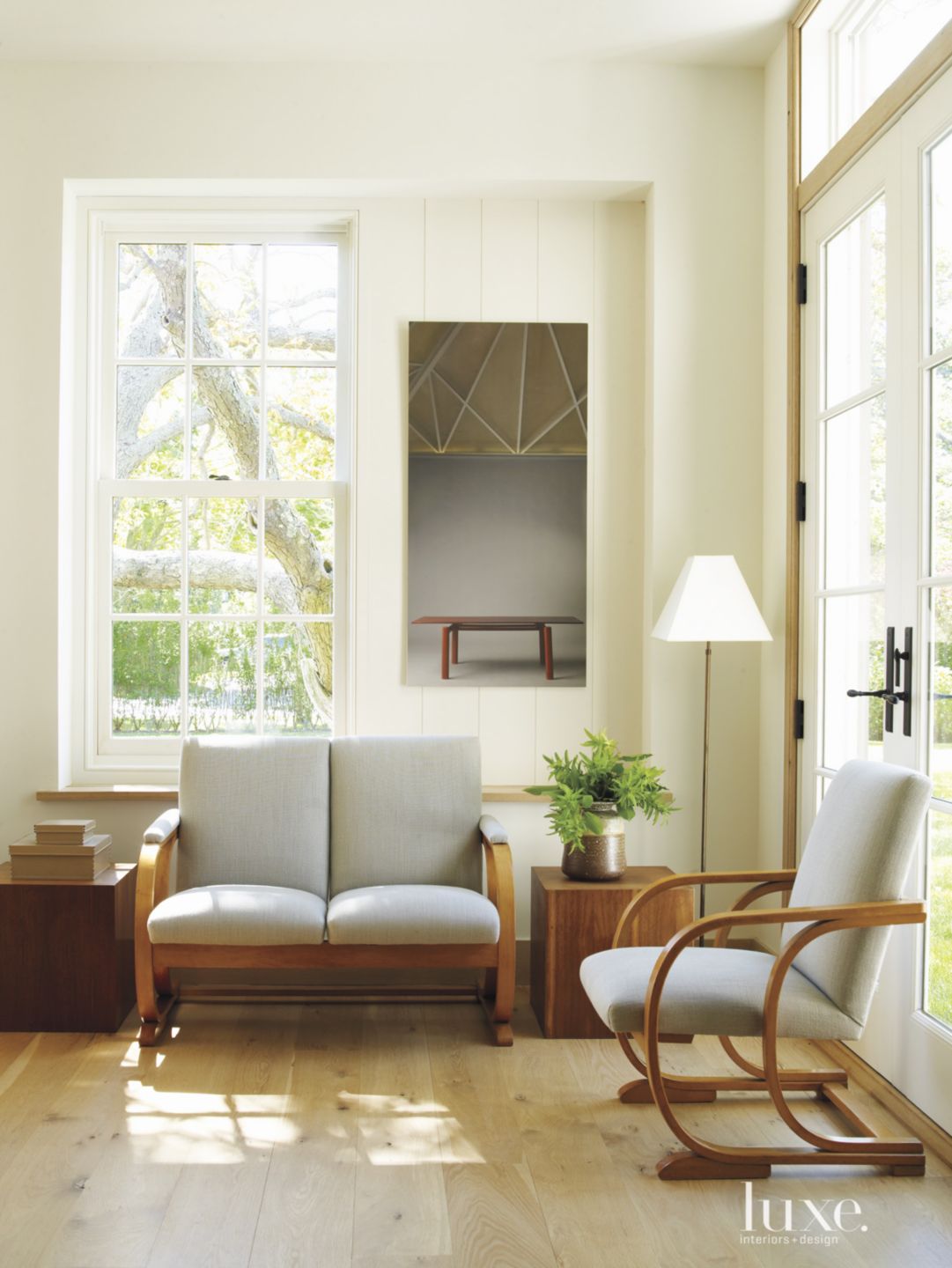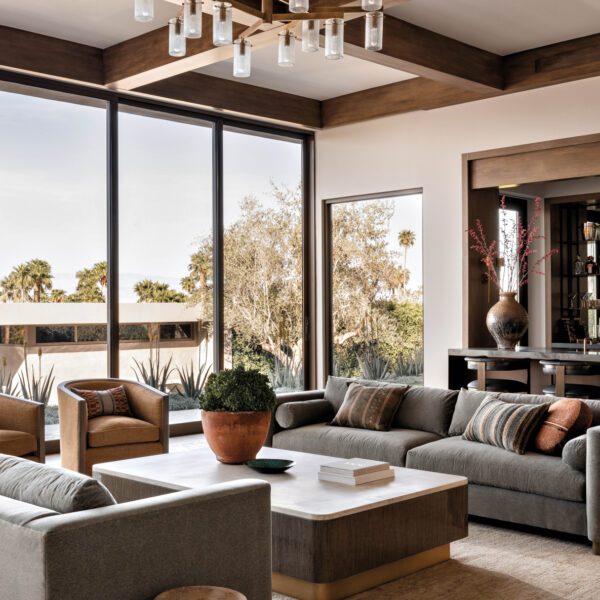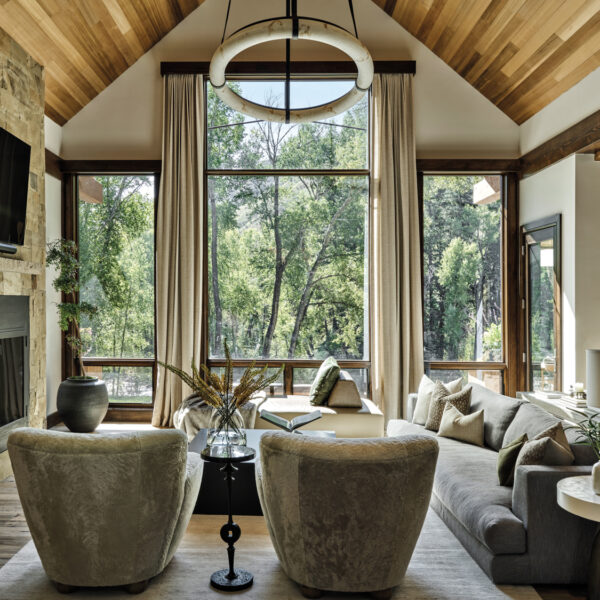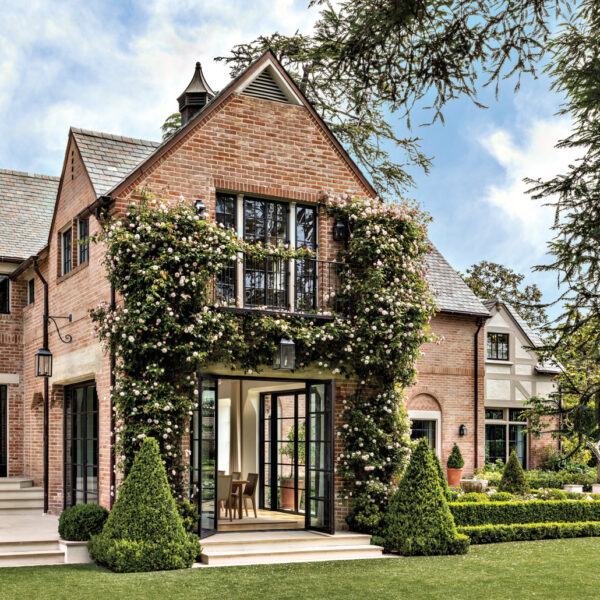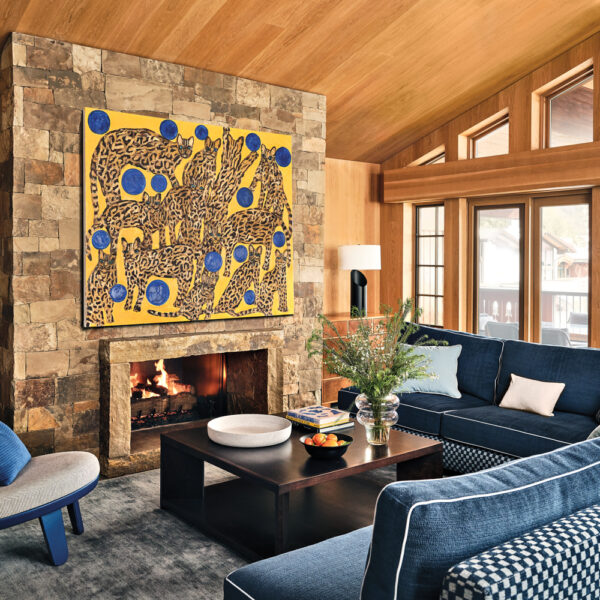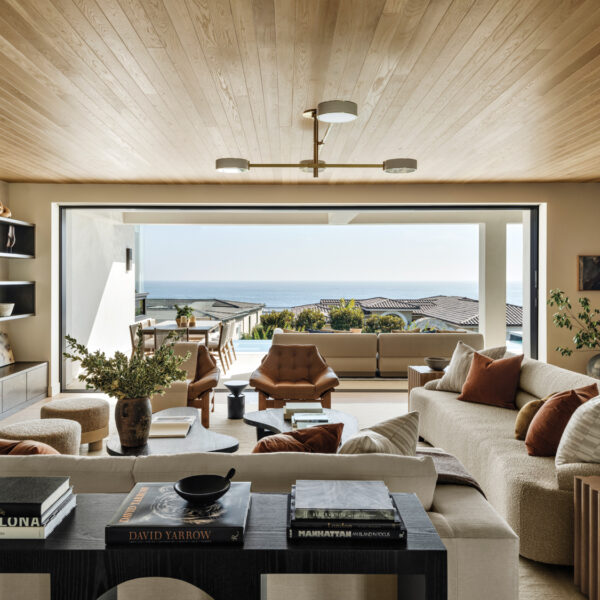Vic and Dena Hammel weren’t in the market for a new home. That is until they discovered the perfect house just three doors away on desirable Mecox Road. The Pennsylvania couple, who have made Bridgehampton their second home for nearly two decades, had recently met with designers on maximizing space in their current residence to accommodate visiting adult children and six grandchildren when they noticed a new construction nearby. “We were already in our dream house, and I never felt like we needed anything more,” recalls Dena of her traditional Shingle-style home she had decorated with country antiques. “But I just wanted to take a look inside—I guess that’s what all women say, I suppose!”
Outfitted with fine oak finishes, an open floor plan free of hallways and a traditional-meets-modern aesthetic, Dena recognized that the house was the embodiment of her own minimalist sensibilities: “It took my breath away,” she says. “It was so unusual and understated, down to the magnificent 100-year-old chestnut tree out front.” In a particularly felicitous turn, a For Sale sign soon went up, and the owners quickly purchased the house, which was conceived in a collaborative effort by architect James Merrell and builder Peter Cardel. “I envisioned it as a modern house bursting from a Colonial,” recalls Merrell, the visionary who joined the team on the basis that they create something different from the archetypal Hamptons home.
Originally, a circa-1800 farmhouse stood on the property. “It was not a substantial house; it was more like a farmhand’s home,” says Cardel of the structure the team removed to build anew. But the team envisioned a home that would keep that history alive, and so, Cardel partnered with Merrell to bring about the idea of a modern farmhouse that, in the same way, would stand the test of time.
Within the wide, U-shaped floor plan, the design team took advantage of the light that floods every room. Because of the unobstructed north- and south-facing views, the walls were washed in a neutral color palette and furniture-grade oak paneling, creating a blank canvas for the Hammels’ longtime designer, Franco Biscardi, and his partner, architect Brian Brady, to create the serene interiors. “In the family room, they wanted one nice seating group, so we scaled up the upholstered pieces to accommodate the deep space,” says Brady, who fashioned a richly layered design scheme. Bespoke upholstery and a natural-toned rug underfoot blend comfortably with standout accents, from vintage iron and travertine-topped tables to a white plaster chandelier based on a Giacometti design. The duo also used window treatments sparingly to further enhance the clean lines of each space.
Of course, picking up on the long-standing beach house tradition, the heart of the home is the al fresco dining terrace paved with limestone and framed by picture windows. “The patio is my husband’s favorite spot and we have a massive picnic table that he insisted on. That was his only wish, to have a table that could seat the entire family,” says Hammel with a smile. And in the end, what started as a functional farmhouse turned out to be a chic, simplistic retreat—one that encompasses the ease of Hamptons living combined with the comfort and harmony of familial ties.
—Alison E. Miller

